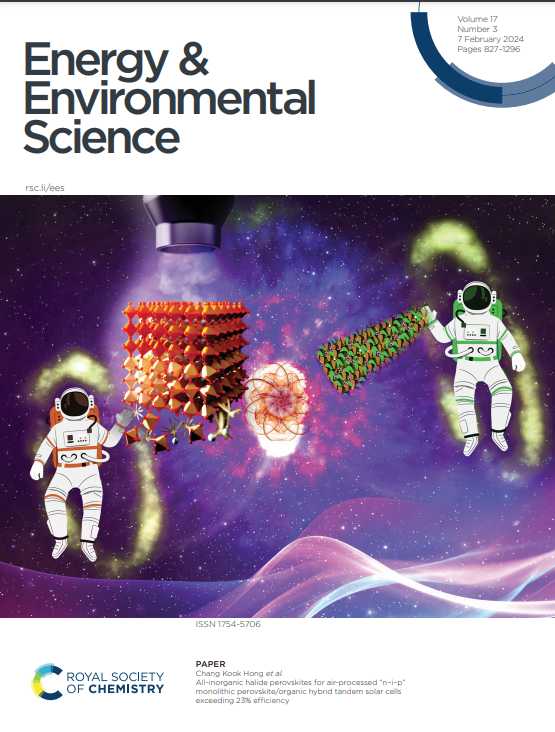Non-destructive Stripping Electrochemistry Enables Long-Life Zinc Metal Batteries
IF 32.4
1区 材料科学
Q1 CHEMISTRY, MULTIDISCIPLINARY
引用次数: 0
Abstract
Current research focuses on regulating Zn plating behavior to address dendrite issue. Although significant improvements in the lifespans of symmetric batteries have been achieved, full batteries do not demonstrate a corresponding increase in overall lifespan. The underlying reasons for this discrepancy remain unexplored. Herein, we identify that this performance mismatch is attributed to the neglect of the initial stripping behavior of the zinc anode in practical full batteries. This initial stripping, characterized by inherent inhomogeneities, causes anomalous and localized detachment of the interface layer. The incompleteness of the interface layer will result in the failure of its protection function. Then a non-destructive stripping strategy involving instantaneous repair of the damaged region is proposed to maintain the structural and functional integrity of interface layer. During prolonged cycling, the copper-zinc species within interface layer undergo irreversible phase reconstruction and spatial redistribution, which facilitate the de-solvation of hydrated Zn2+ and determine the plating of large-sized Zn(002). Utilizing this non-destructive anode, the full battery demonstrates a lifespan increase comparable to that of symmetric battery, achieving an ultralong lifespan (1240 hours, 800 cycles) at a low current density (0.246 A g−1) with an ultrahigh cumulative capacity (847 mAh cm−2), and an Ah-level pouch cell exhibiting 150 stable cycles is also validated.非破坏性剥离电化学实现长寿命锌金属电池
目前的研究重点是通过调控锌的镀行为来解决枝晶问题。虽然对称电池的寿命已经有了显著的提高,但满电池的整体寿命并没有相应的提高。造成这种差异的根本原因尚不清楚。在本文中,我们发现这种性能不匹配是由于在实际的全电池中忽略了锌阳极的初始剥离行为。这种初始剥离以其固有的不均匀性为特征,导致界面层的异常和局部剥离。接口层的不完备将导致其保护功能失效。然后,提出了一种非破坏性剥离策略,即对损伤区域进行瞬时修复,以保持界面层的结构和功能完整性。在长时间循环过程中,界面层内的铜锌组分发生不可逆的相重构和空间再分布,促进了水合Zn2+的脱溶剂化,决定了大尺寸Zn的电镀(002)。利用这种非破坏性阳极,完整电池的寿命延长与对称电池相当,在低电流密度(0.246 a g−1)下实现超长寿命(1240小时,800次循环),具有超高的累积容量(847 mAh cm−2),并且还验证了具有150次稳定循环的ah级袋状电池。
本文章由计算机程序翻译,如有差异,请以英文原文为准。
求助全文
约1分钟内获得全文
求助全文
来源期刊

Energy & Environmental Science
化学-工程:化工
CiteScore
50.50
自引率
2.20%
发文量
349
审稿时长
2.2 months
期刊介绍:
Energy & Environmental Science, a peer-reviewed scientific journal, publishes original research and review articles covering interdisciplinary topics in the (bio)chemical and (bio)physical sciences, as well as chemical engineering disciplines. Published monthly by the Royal Society of Chemistry (RSC), a not-for-profit publisher, Energy & Environmental Science is recognized as a leading journal. It boasts an impressive impact factor of 8.500 as of 2009, ranking 8th among 140 journals in the category "Chemistry, Multidisciplinary," second among 71 journals in "Energy & Fuels," second among 128 journals in "Engineering, Chemical," and first among 181 scientific journals in "Environmental Sciences."
Energy & Environmental Science publishes various types of articles, including Research Papers (original scientific work), Review Articles, Perspectives, and Minireviews (feature review-type articles of broad interest), Communications (original scientific work of an urgent nature), Opinions (personal, often speculative viewpoints or hypotheses on current topics), and Analysis Articles (in-depth examination of energy-related issues).
 求助内容:
求助内容: 应助结果提醒方式:
应助结果提醒方式:


